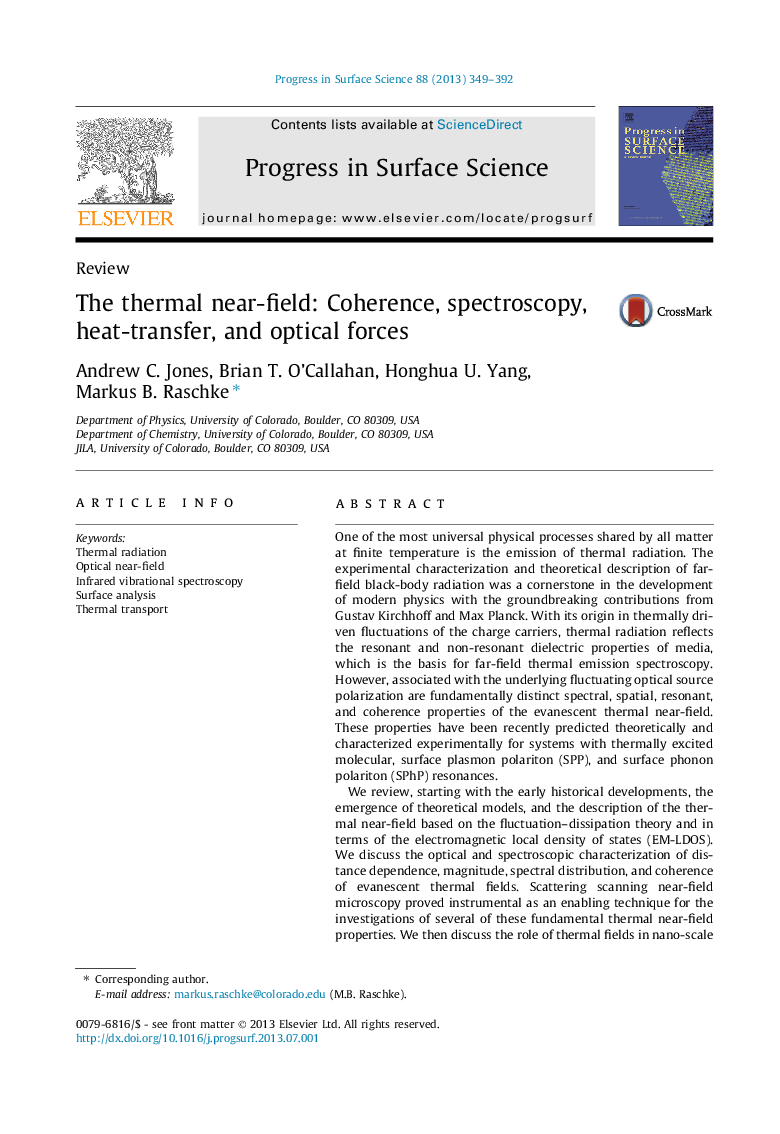| Article ID | Journal | Published Year | Pages | File Type |
|---|---|---|---|---|
| 5419951 | Progress in Surface Science | 2013 | 44 Pages |
Abstract
We review, starting with the early historical developments, the emergence of theoretical models, and the description of the thermal near-field based on the fluctuation-dissipation theory and in terms of the electromagnetic local density of states (EM-LDOS). We discuss the optical and spectroscopic characterization of distance dependence, magnitude, spectral distribution, and coherence of evanescent thermal fields. Scattering scanning near-field microscopy proved instrumental as an enabling technique for the investigations of several of these fundamental thermal near-field properties. We then discuss the role of thermal fields in nano-scale heat transfer and optical forces, and the correlation to the van der Waals, Casimir, and Casimir-Polder forces. We conclude with an outlook on the possibility of intrinsic and extrinsic resonant manipulation of optical forces, control of nano-scale radiative heat transfer with optical antennas and metamaterials, and the use of thermal infrared near-field spectroscopy (TINS) for broadband chemical nano-spectroscopic imaging, where the thermally driven vibrational optical dipoles provide their own intrinsic light source.
Keywords
Related Topics
Physical Sciences and Engineering
Chemistry
Physical and Theoretical Chemistry
Authors
Andrew C. Jones, Brian T. O'Callahan, Honghua U. Yang, Markus B. Raschke,
